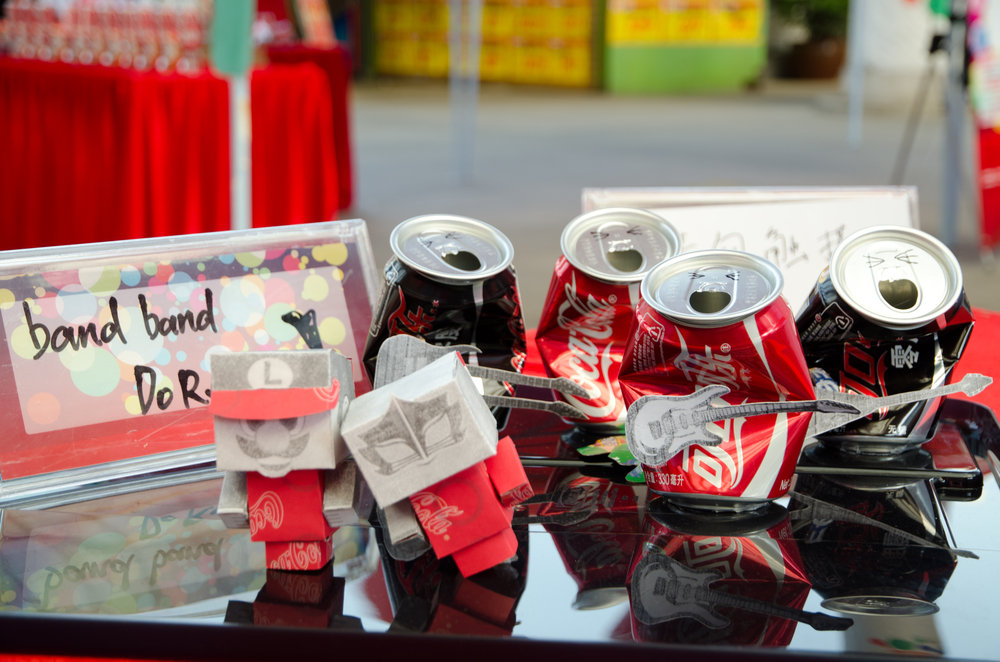Chris Sherwin: why recycling isn’t enough to fix the plastics problem
The founder of Reboot Innovation, a creative studio dedicated to sustainability, argues that designers should not be focusing solely on recyclable packaging but instead on systems that encourage the public to “reuse and refill” old containers.
From “single-use” being announced as Collins Dictionary’s word-of-the-year, through to nationwide public support for government action to reduce plastic waste, alongside a number of anti-plastic and zero-waste living campaigns, 2018 was a remarkable year for sustainable packaging. But where will this go next in 2019?
Our current wave of public concern shows little sign of receding, but one concern is the over-reliance on recycling as our dominant sustainable packaging strategy, to the detriment of other important or more impactful options.
A cursory glance at some of the big brand commitments, such as Coca-Cola’s promise to collect and recycle the same number of bottles and cans it sells globally by 2030, emerging tools and media campaigns would have you believe that sustainable packaging is largely about better recycling: designing for recyclability, adding recycled materials, developing recycling infrastructure or technology. These are all important activities in their own right but are these the only or even best things to do?
One of our oldest rules-of-thumb on waste tells us to “reduce, reuse, recycle” – in that order – meaning today’s sustainable packaging debate feels like we are reading the waste hierarchy upside down.
Commentators are beginning to question whether we will really recycle our way out of trouble and I think a massively under-utilised strategy is packaging reuse and refill. I don’t mean gimmicky packaging design that encourages people to reuse jam jars as paint pots; I mean holistic, systemic solutions that are better at using and reducing waste at the same time.
I’ve had a fair amount of refill design experiences over the last years, many of which were unsuccessful. In such projects, the design teams I worked with encountered barriers that made refill concepts unviable or unattractive, such as consumers being unprepared to change their “disposable” behaviour and retailers pushing back on stocking new packaging formats. This all means that “refill and reuse” is actually quite difficult to execute.
Despite that, packaging reuse remains a tantalising prize. The value of the reusable packaging market is believed to be $9 billion globally, across personal and household care, beverage bottles, carrier bags, business-to-business rigid packaging, and other categories.
Academic research highlights 16 different refill strategies, including: decanting from a pouch into original bottles; “Gillette-style” reloadable systems with a durable keeper and disposable units that plug-in; bulk dispensers that can be refiled in-store or at home; door-to-door milkman-like delivery services; and concentrated products where consumers add water to remix in the original packaging. So there are clear commercial and creative opportunities here.
Indeed, you can see the first signals of this refill revolution. This is increasingly visible through the rise of zero-waste stores, stemming from the UK’s first one which opened in Devon in 2017, and new vending machine innovations for refilling bottles, such as milk refill machines, on-campus water refills at universities, and refill stops in natural and organic supermarkets. Then there’s also CupClub, founded by Studio D-Tale – a coffee-cup-as-a-service model in which on-the-go users rent a reusable cup and then drop it off at any participating outlet when they’re done with it. This is all heartening though not merely enough.
I believe brands can do much more on packaging reuse than the pilot projects or niche experiments we are seeing today. I don’t believe it is right to simply push responsibility for reuse on to consumers; we must design things differently in the first place. In addition, we will need a full suite of sustainable packaging strategies for the war on waste in 2019, and this must include reuse. Will 2019 be the year for a packaging refill revolution?

